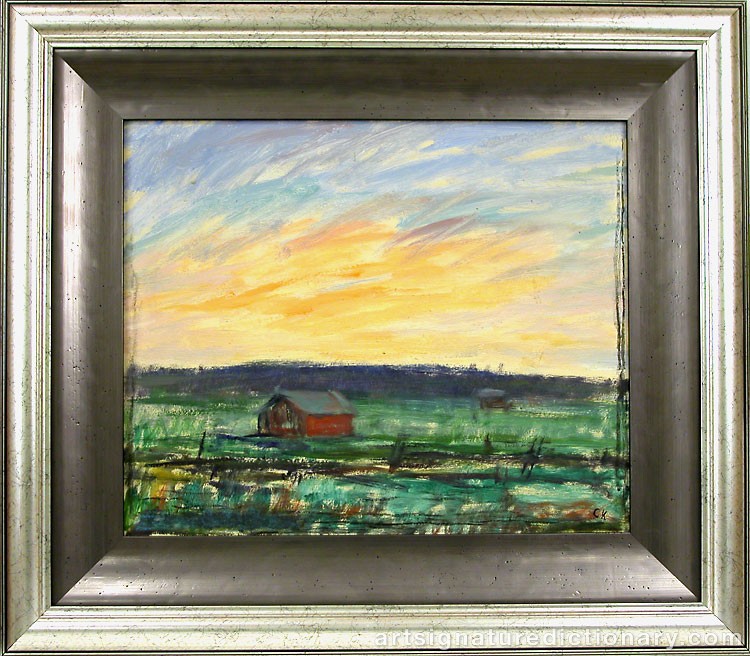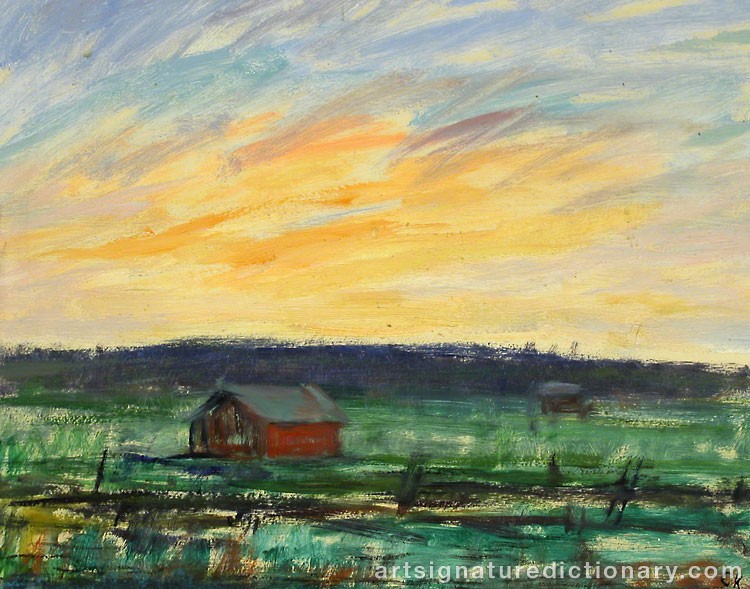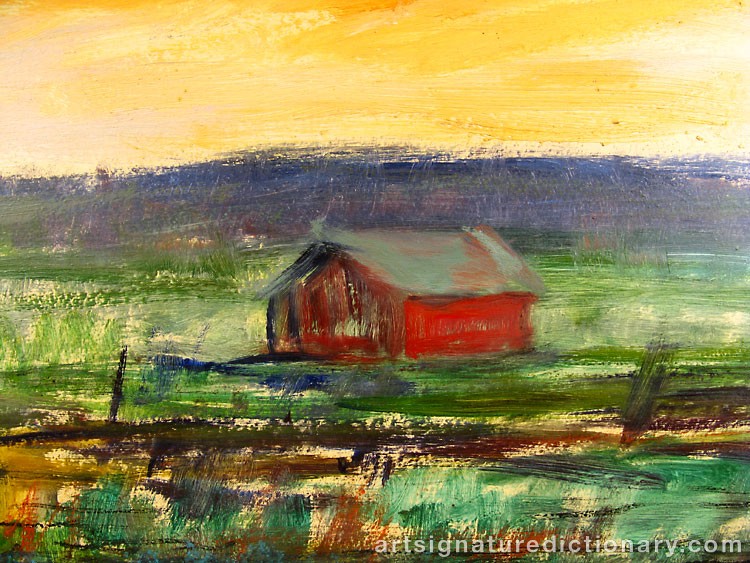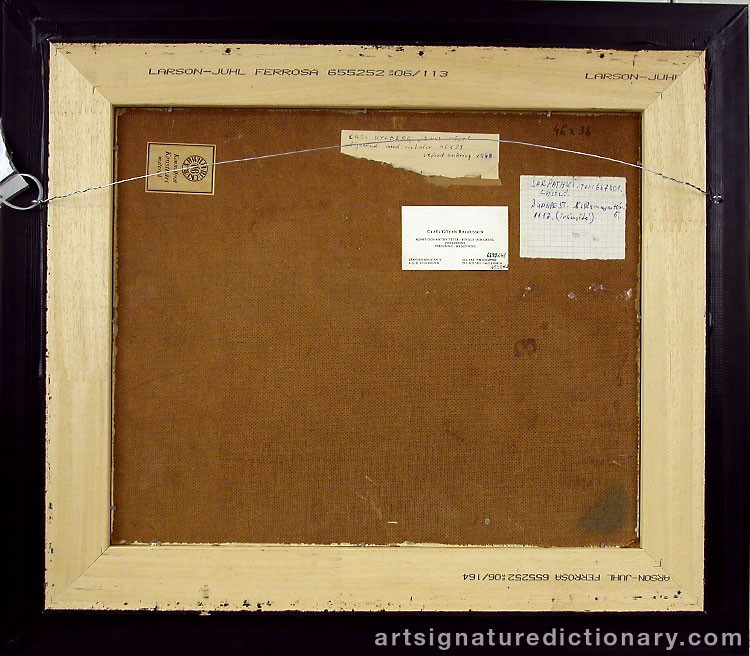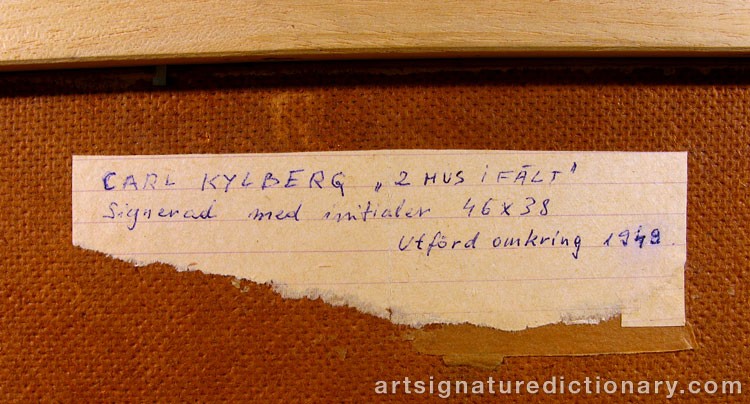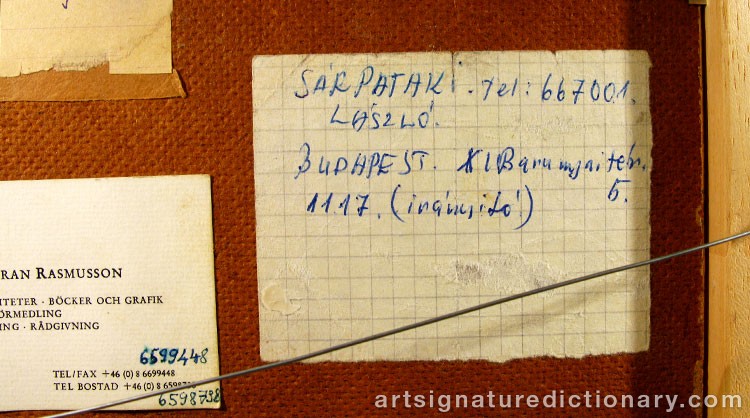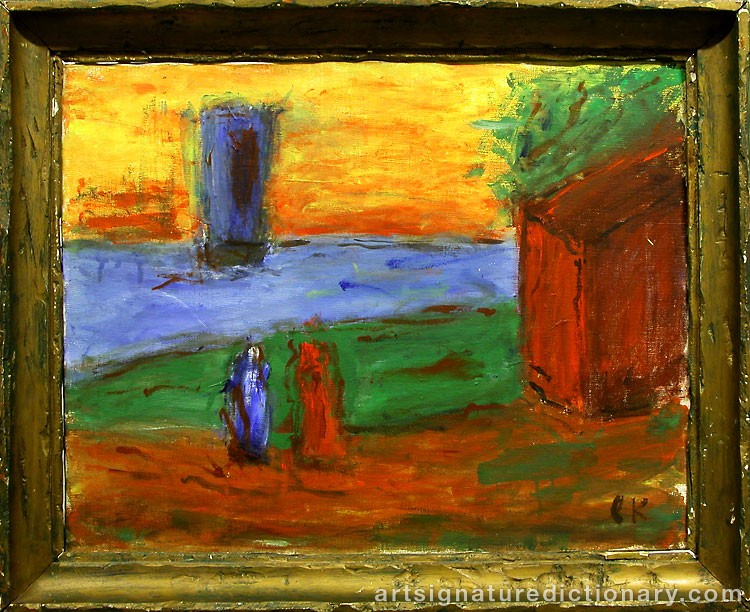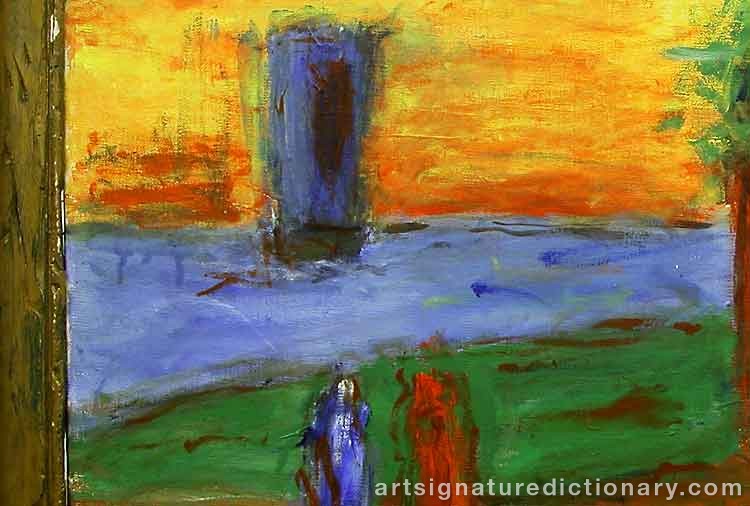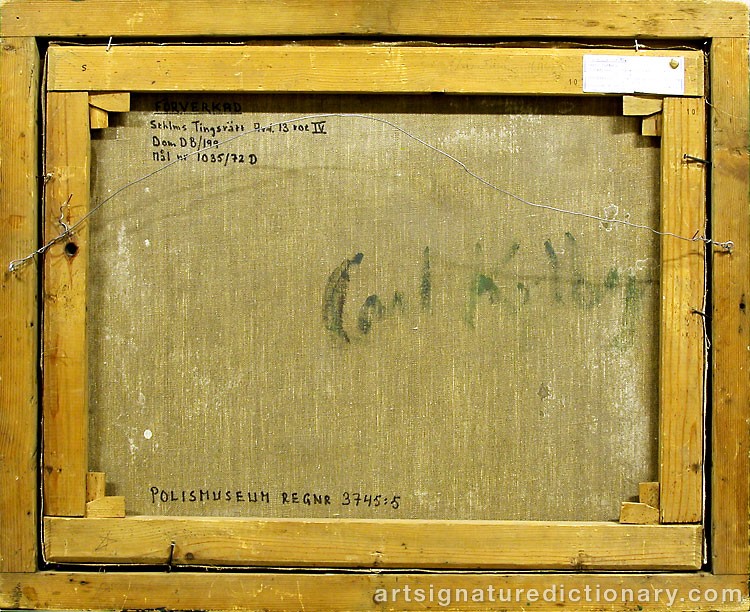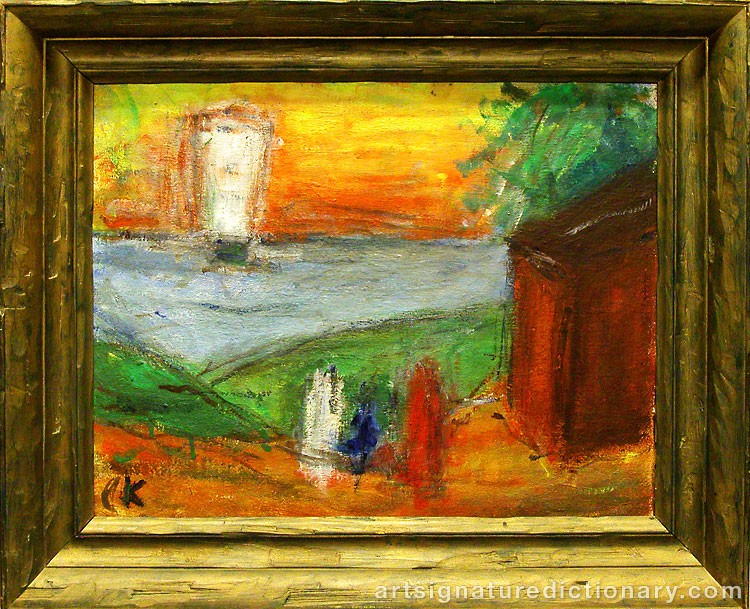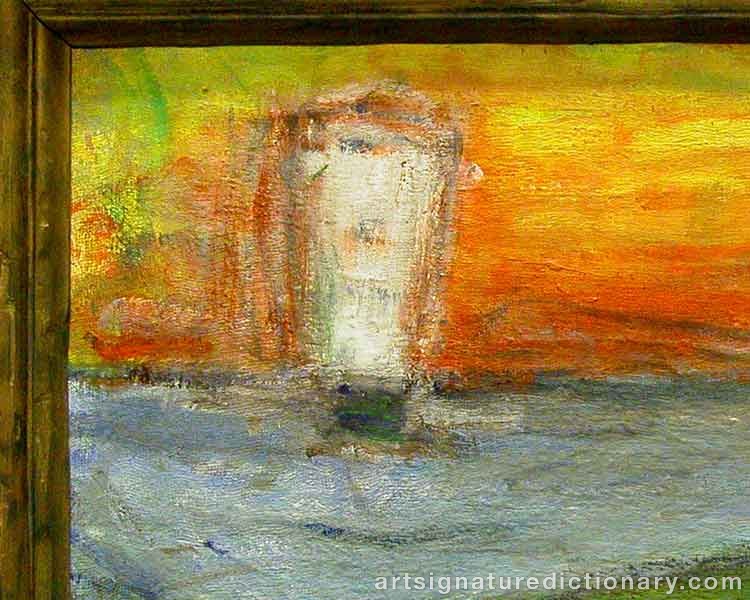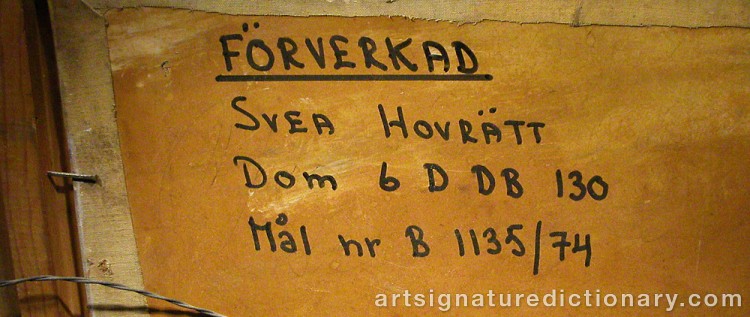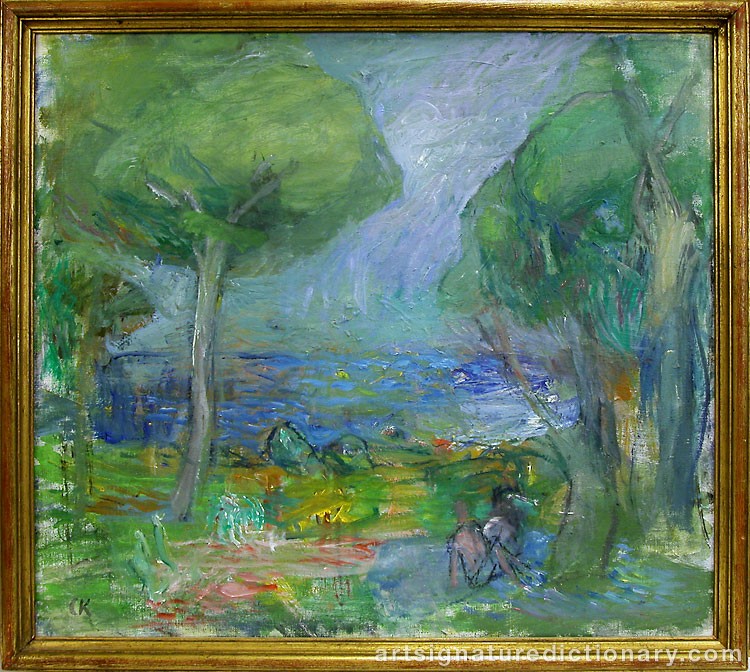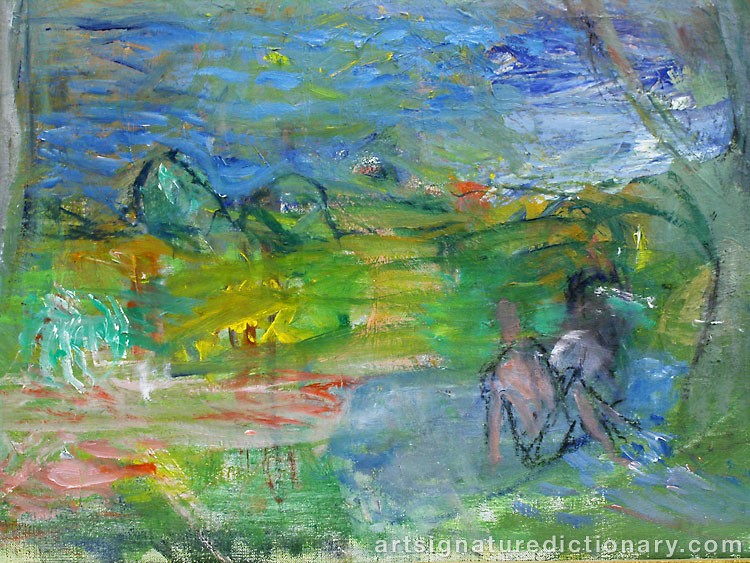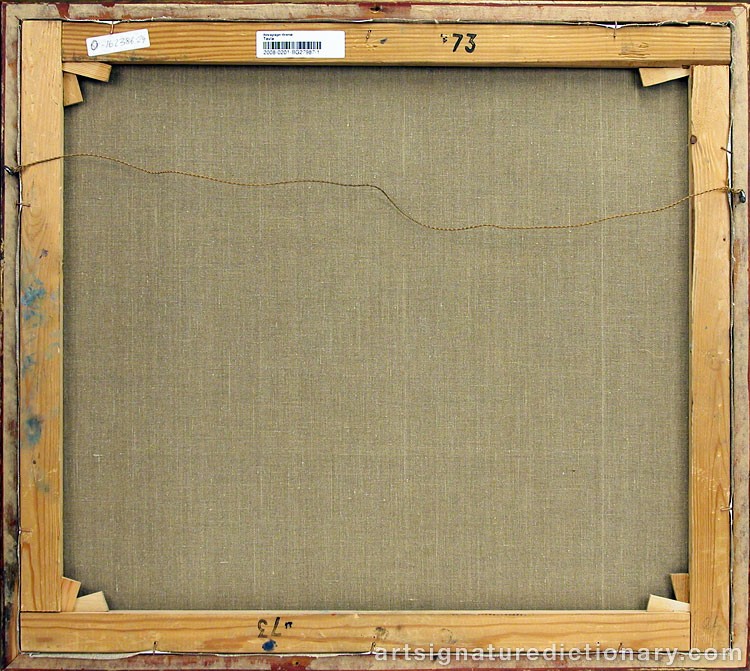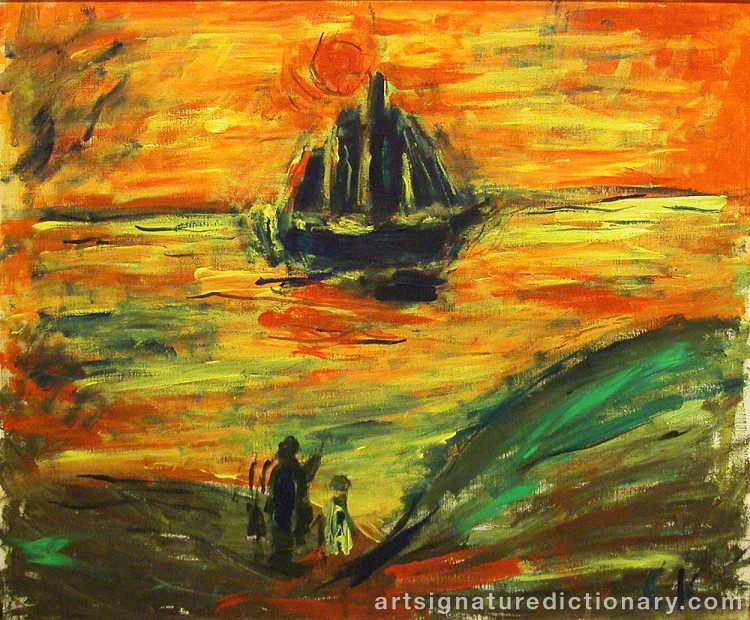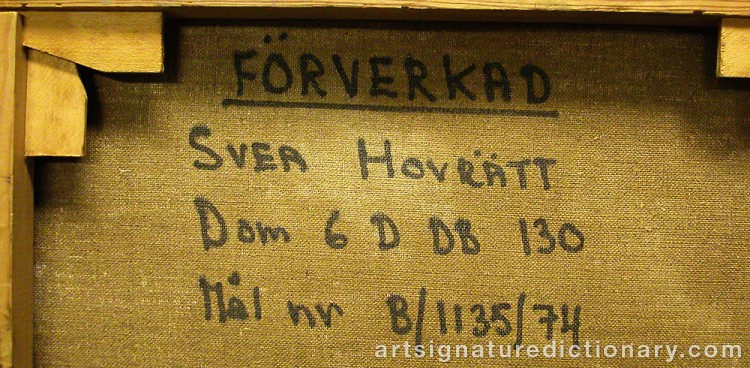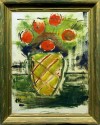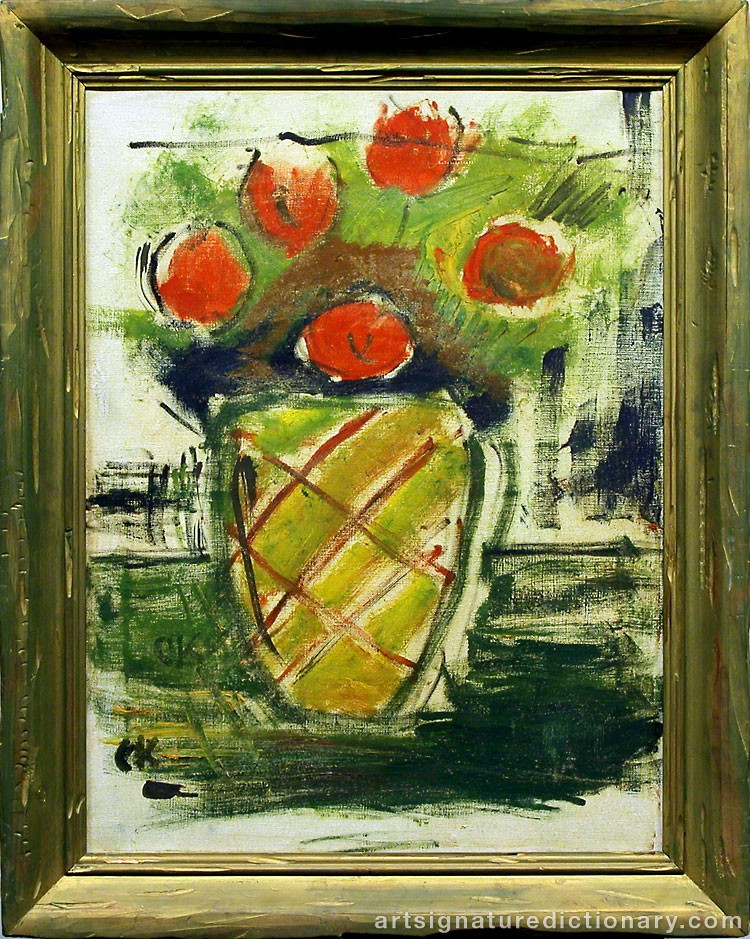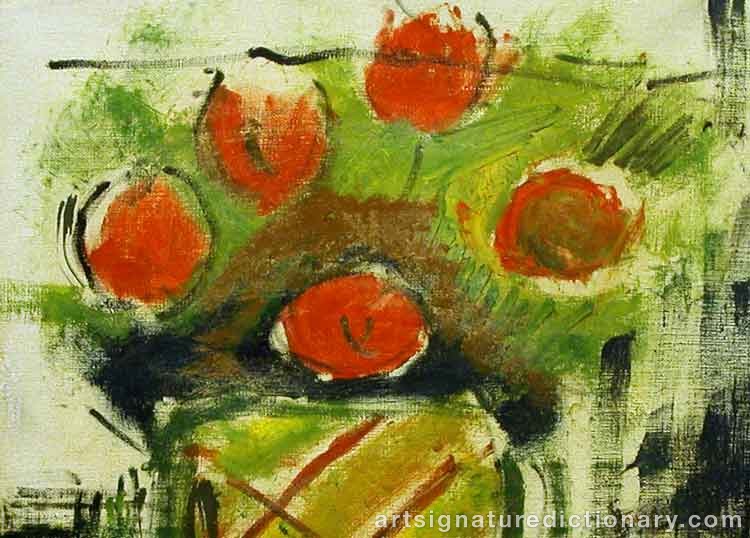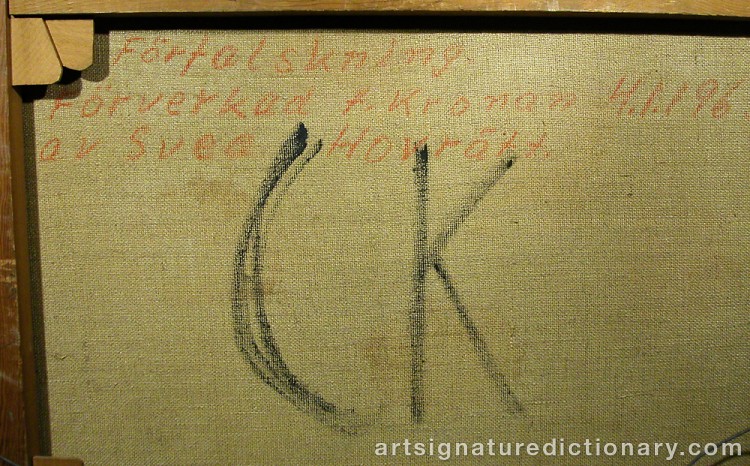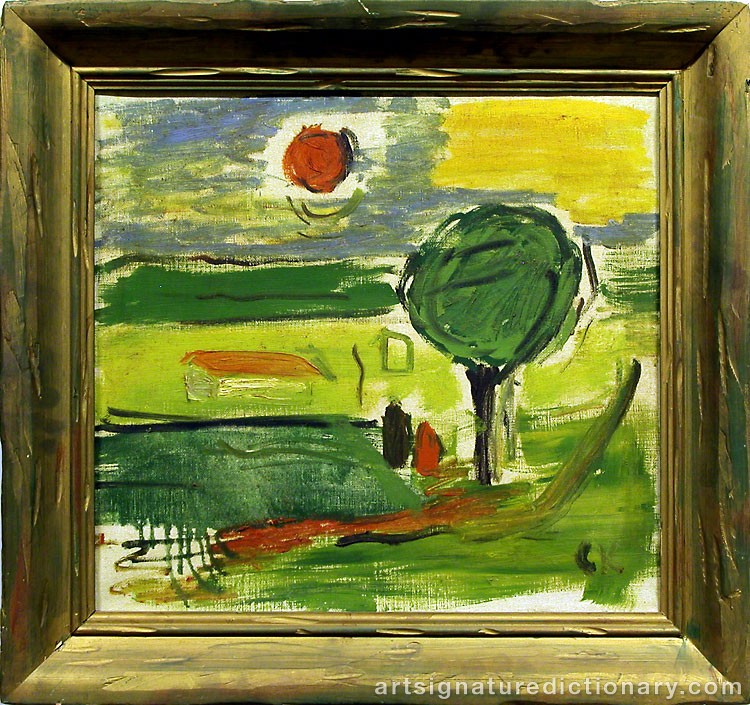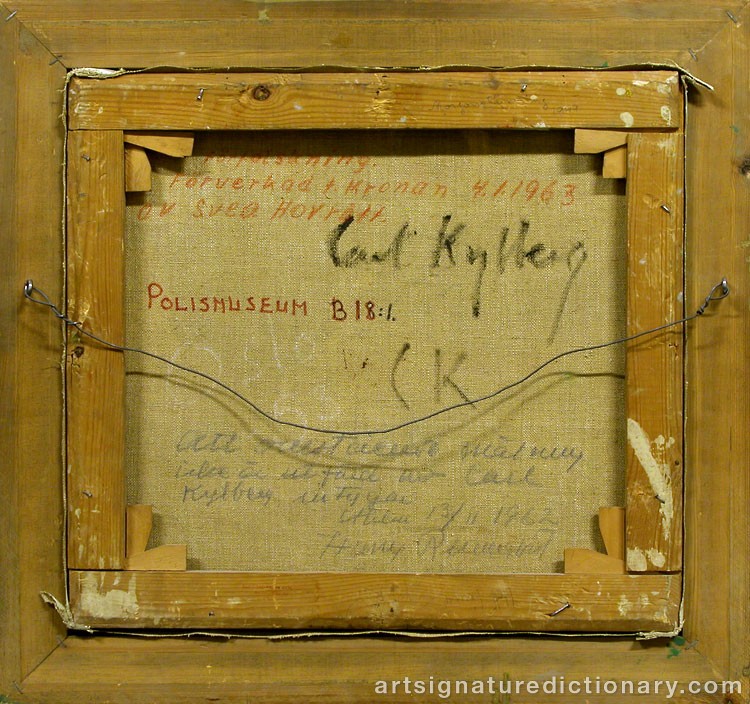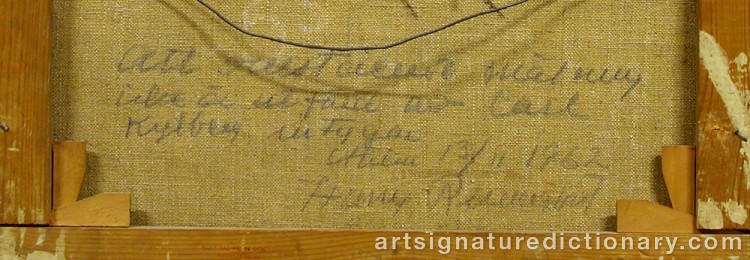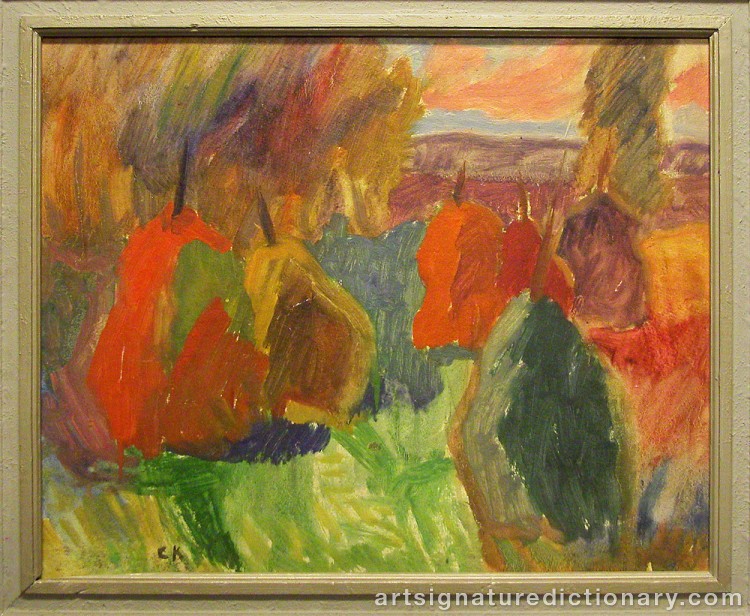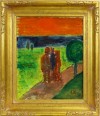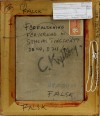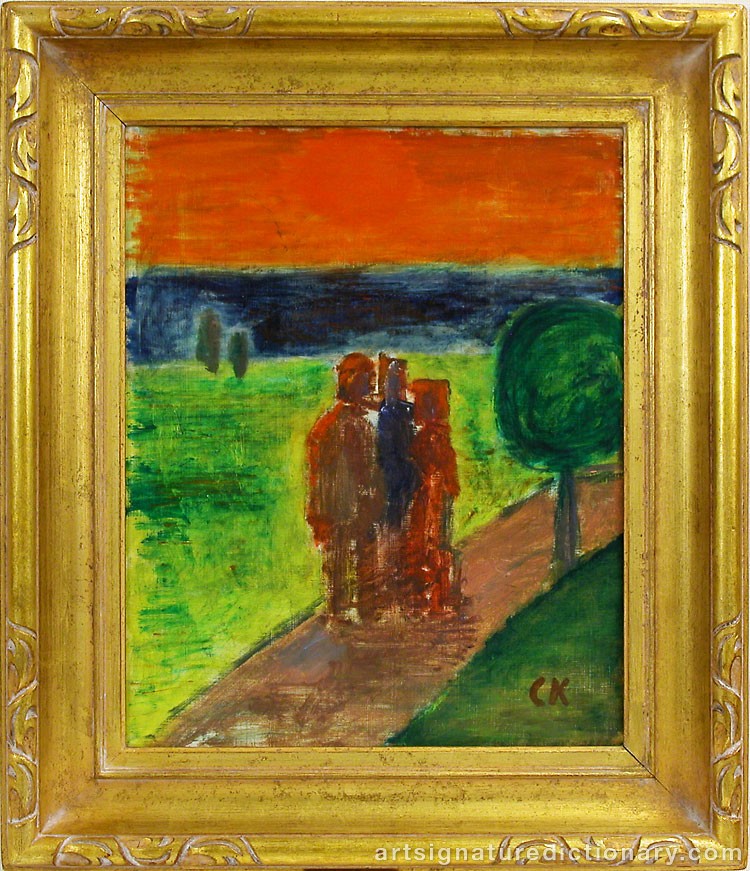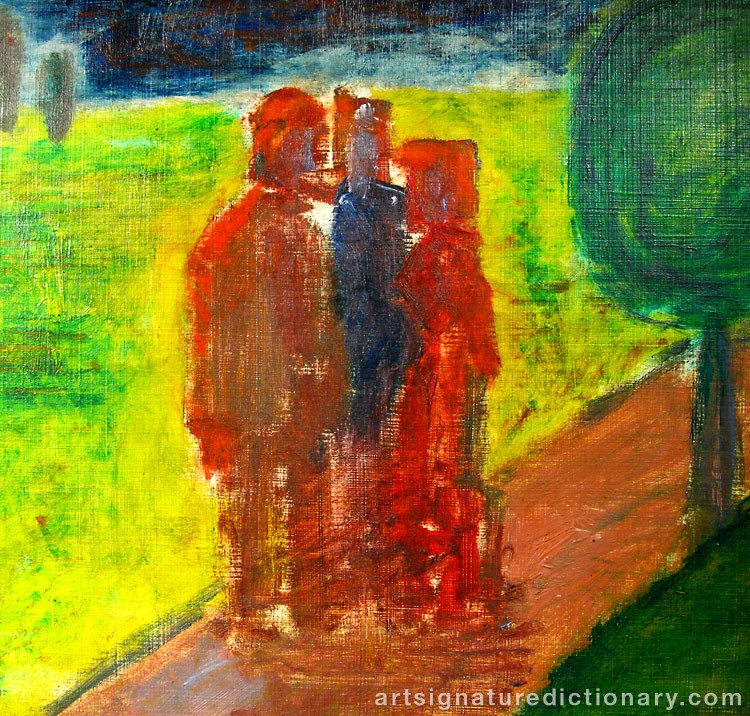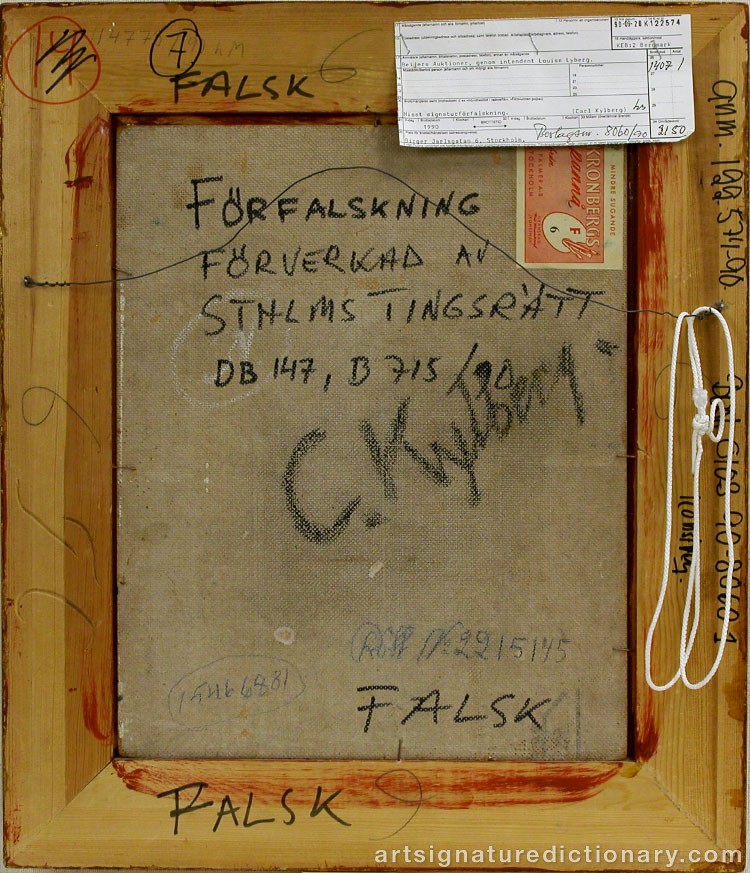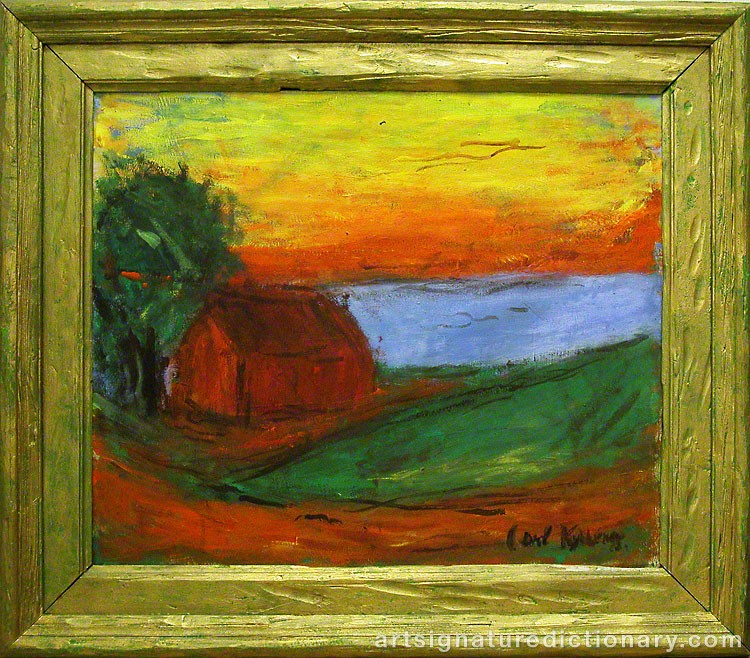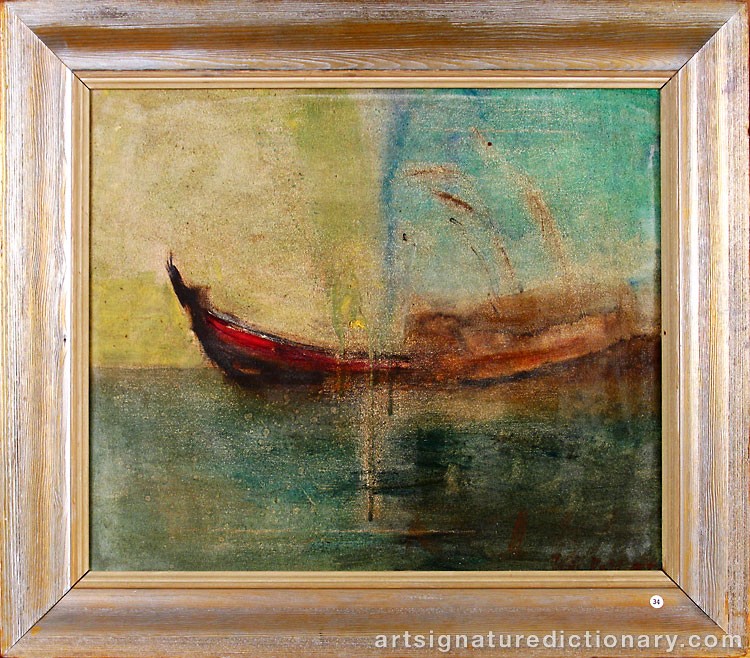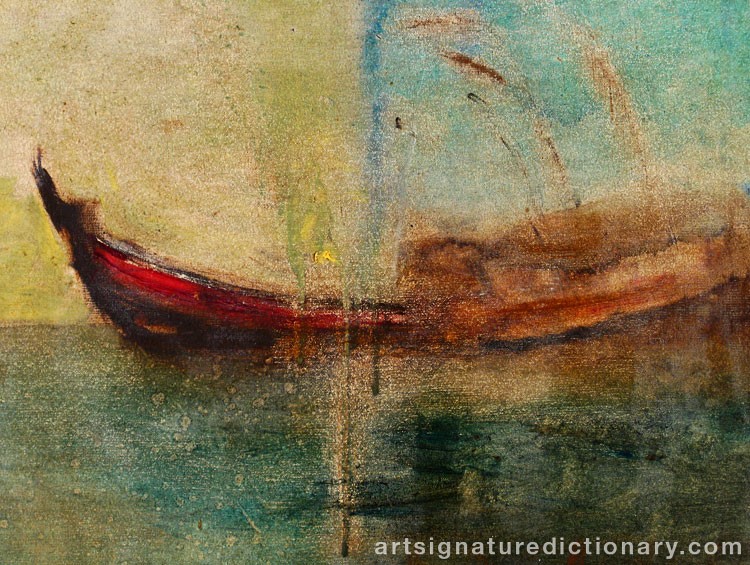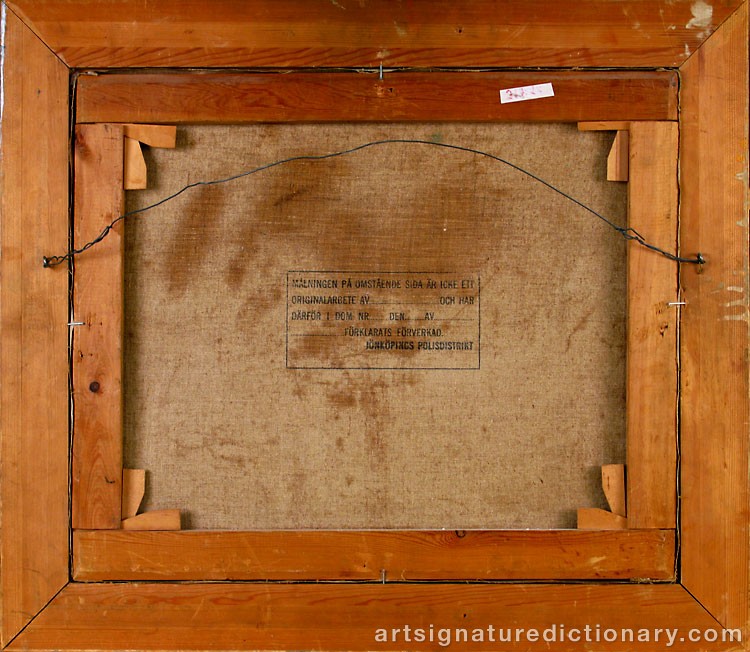Carl KYLBERG
1878–1952, Sweden
Also known as: CK
Signatures & monograms
25 signatures and monograms by Carl Kylberg on drawing, graphic, print, painting and watercolour. Compare authentic and documented counterfeit examples to study signature characteristics.

Signature proven counterfeit
Oil on canvas, signed with monogram "CK". The painting was seized by Kronofogdemyndighten in Stockholm 2008 after a seizure of Men "M.Sz" home. On the back of the painting was, attached, one an absentee bid from the auction house Bukowski dated 1986 and signed by M.Sz. As stated bid 150000-200000 AD. Mr. M.Sz. success to lull Enforcement Authority in the belief that the painting is worth 400,000 SEK and that should be enough to cover his debt. Police investigation indicates that these dockument were forged to give the painting a misleading provenance and thereby lull potential buyers about its authenticity. The painting has been examined by experts, which proved that it is an amateurish painting performed in Kylberg style but lacks all quality to be a genuine Kylberg. It is a forgery. The District Court's assessment: The painting is not an original work of Carl Kylberg nor signed by him. The crime is serious fraud with intent to lull prospective buyers that this is a genuine work of Carl Kylberg. Criminal sanctions, one year in prison.

Signature proven counterfeit
Acrylic on canvas 51x64 cm. The painting is part of a major fraud seizures of counterfeit art in Sweden known as ”The Society of Art Friends”: Three men, aged 30, 37, and 40 years old, were caught in Stockholm, Sweden after a reconnaissance tip from police in Ängelholm, Sweden. Shortly afterwards, another two men were caught. In total, 48 house searches were made through out the nation from which 83 forged paintings were confiscated. Forged art had already been sold for millions of Swedish crowns. Victims of the gang were well known businessmen with considerable incomes. League had good help from educated art experts who have written certificate of authenticity to many of the fake paintings, often at very small remuneration. On a door to a flat in Stockholm the men had displayed a sign with the text “The Society of Art Friends”.

Signature proven counterfeit
Acrylic on canvas mounted on panel, 39x49 cm. On the back is written: The painting has been the curator W.W...g glued on panel. On the reverse of the canvas was a text: "Waiting 1934" Carl Kylberg, study of anticipation, No. 58 Swedish-French Art Gallery 9/2 - 3/3 1935, Stockholm 9 April 1954. W.W...g". The painting is part of a major fraud seizures of counterfeit art in Sweden known as ”The Society of Art Friends”: Three men, aged 30, 37, and 40 years old, were caught in Stockholm, Sweden after a reconnaissance tip from police in Ängelholm, Sweden. Shortly afterwards, another two men were caught. In total, 48 house searches were made through out the nation from which 83 forged paintings were confiscated. Forged art had already been sold for millions of Swedish crowns. Victims of the gang were well known businessmen with considerable incomes. League had good help from educated art experts who have written certificate of authenticity to many of the fake paintings, often at very small remuneration. On a door to a flat in Stockholm the men had displayed a sign with the text “The Society of Art Friends”.

Signature proven counterfeit
Oil on canvas. The painting was for sale at a major auction house in Stockholm by an art dealer from a small Swedish town. At the same time, he left two other paintings by famous artists, even those were counterfeits. The auction house contacted police when suspicions arose about the authenticity of painting.

Signature proven counterfeit
Falsely signed C.K. Motive: longing for the sea. Acrylic painting on canvas During the investigation against a group that called themselves ’the Friends of Art Society’, several fake paintings by Carl Kylberg were seized. The paintings were sentenced out of the expertise on stylistic grounds, and a technical examination of the paintings was made. Through a chemical analysis of the color the presence of plastic of the same or similar type as acrylic paint was found. Acrylic painting did not become common in Europe until the 1960s, after the death of Kylberg. Therefore he was sometimes called Akrylberg instead of Kylberg. A few years ago a false Kylberg was sold for about 550.000 Swedish crown at an auction in Stockholm. The painting had undoubtedly the same originator as previously found paintings. The analysis of this painting, at the National Forensic Science Laboratory (SKL), showed that the paint was of vinyl, a paint that came into use somewhat earlier than acrylic paint. So, now maybe we will have to rename the forger to Vinylberg ... This painting is a fake signed pastiche, a counterfeiting. The painting is part of a major fraud seizures of counterfeit art in Sweden known as ”The Society of Art Friends”: Three men, aged 30, 37, and 40 years old, were caught in Stockholm, Sweden after a reconnaissance tip from police in Ängelholm, Sweden. Shortly afterwards, another two men were caught. In total, 48 house searches were made through out the nation from which 83 forged paintings were confiscated. Forged art had already been sold for millions of Swedish crowns. Victims of the gang were well known businessmen with considerable incomes. League had good help from educated art experts who have written certificate of authenticity to many of the fake paintings, often at very small remuneration. On a door to a flat in Stockholm the men had displayed a sign with the text “The Society of Art Friends”.

Signature proven counterfeit
Acrylic on canvas. A private person (Swedish citizen) tried to sell this painting and another painting (see PHM 18:1) for SEK 8.000 per unit. to an art dealer in Västerås in Sweden. The price was lowered to SEK 6.000. In a subsequent investigation revealed that the paintings were forged. Police were contacted who took the paintings seized.

Signature proven counterfeit
Acrylic on canvas, 41x45 cm. One person tried to sell this painting and another painting of SEK 8000 per pc. to an art dealer in Vasteras, Sweden. Art dealer bought them for SEK 6000 per pc. A check revealed that the paintings were fakes. Police were contacted who took the paintings seized.

Signature proven counterfeit
Oil on paper mounted on panel, 48x59 cm. Abstract landscapes, signed CK in the lower left corner. Hand painted black wooden frame. Estimated Price SEK 25,000 for sale in Stockholm in 2003. Loan amount SEK 35,000. The painting, along with eight other works of art, has been pledged at the Swedish mortgage Mortgage AB in Gothenburg. They have been forwarded to an auction works in Stockholm for sale. All the artwork in the study was falsified. They have been pledged by "JW" who has been under investigation regarding serious misapplication of funds and is also guilty of this. A painting that was stored at the pawn shop for JW behalf but not mortgaged was submitted to a smaller auction house in Stockholm. Although this painting has proven to be a forgery. It was signed Toulose Lautrec.

Signature proven counterfeit
Oil on canvas. This painting was referred to an auction house in Stockholm for sale. auction house suspected it was a forgery. Police were contacted who took the painting to seizure. The chemical examination of the paint showed that it was painted with acrylic, which did not exist when Kylberg was active, he died in 1952 and the acrylic paint was marketed ca. 1960. Submitter stated that he bought the painting directly from the artist, when he realized that it was painted with acrylic change his mind and was then bought by itinerant traders.


Signature proven counterfeit
Oil on canvas, signed Carl Kyhlberg. The painting is signed in lower right corner. The signature appears to be superficial but the color of the signature does not react particularly in the ultraviolet illumination. Signature appear, therefore, to be original. Derkert: Overall there is a similarity with Kyhlberg works but the difference is obvious. Kyhlberg worked with more saturated color surfaces while this painting provides an erased, sketch-like appearance. The painting is not a work of Carl Kyhlberg. The District Court's assessment: The painting is a forgery.

Signature considered genuine

Signature considered genuine

Signature considered genuine

Signature considered genuine

Signature considered genuine

Signature considered genuine

Signature considered genuine
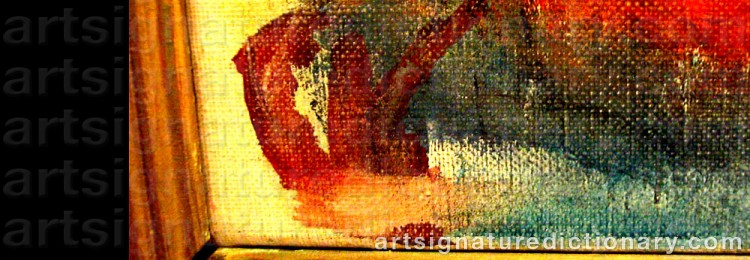
Signature considered genuine

Signature considered genuine

Signature considered genuine
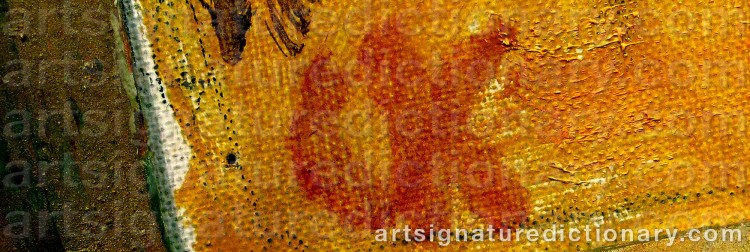
Signature considered genuine

Signature considered genuine

Signature considered genuine

Signature considered genuine
Explore other artists
Discover other notable artists who were contemporaries of Carl KYLBERG. These artists worked during the same period, offering valuable insights into artistic movements, signature styles, and authentication practices. Exploring related artists makes it easier to recognize common characteristics and artistic conventions of their era.






